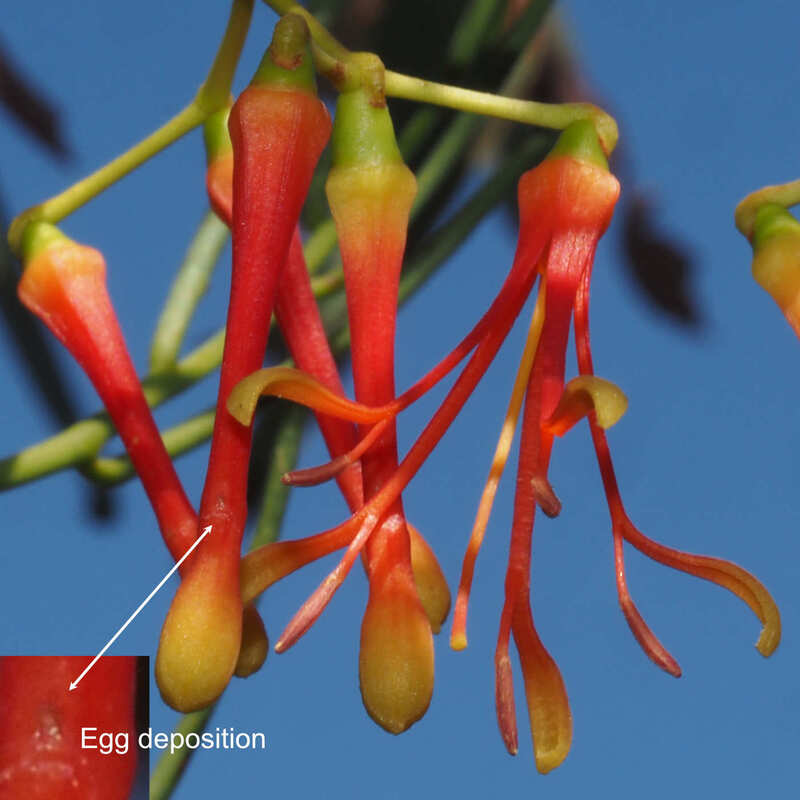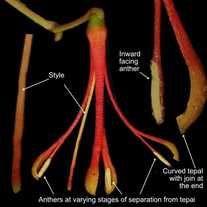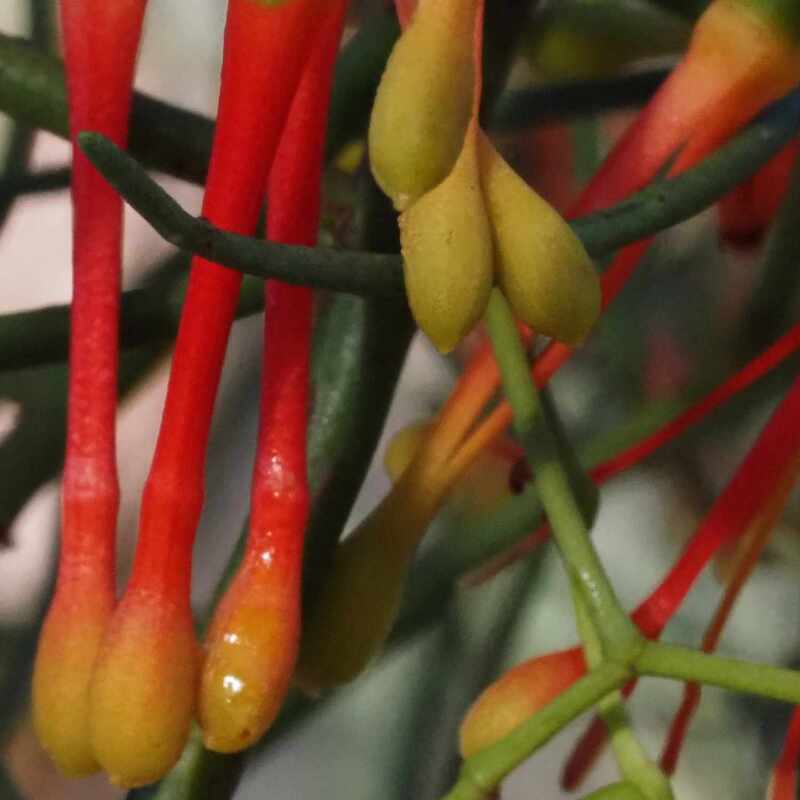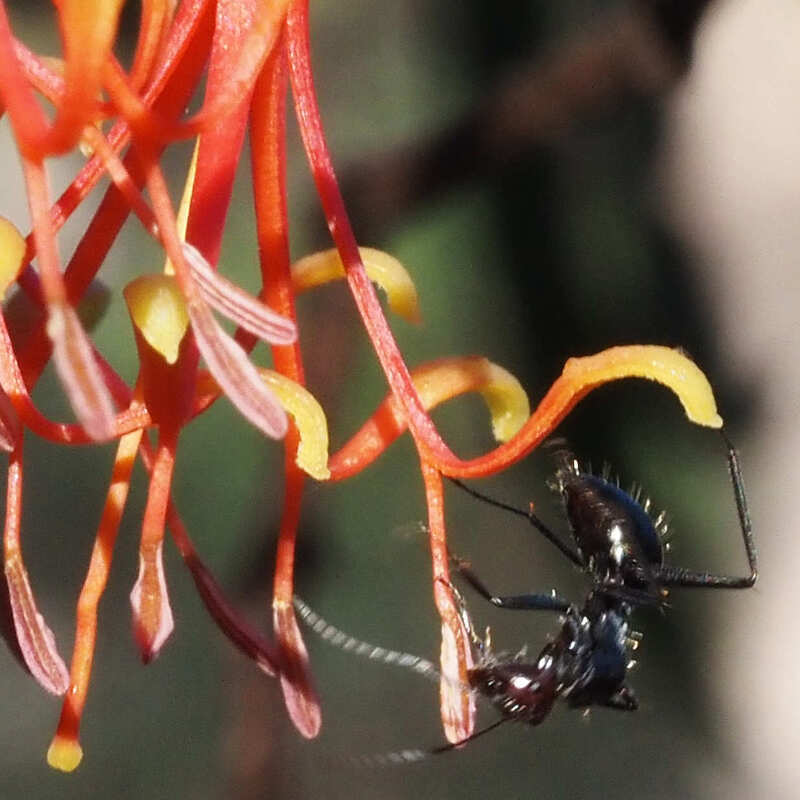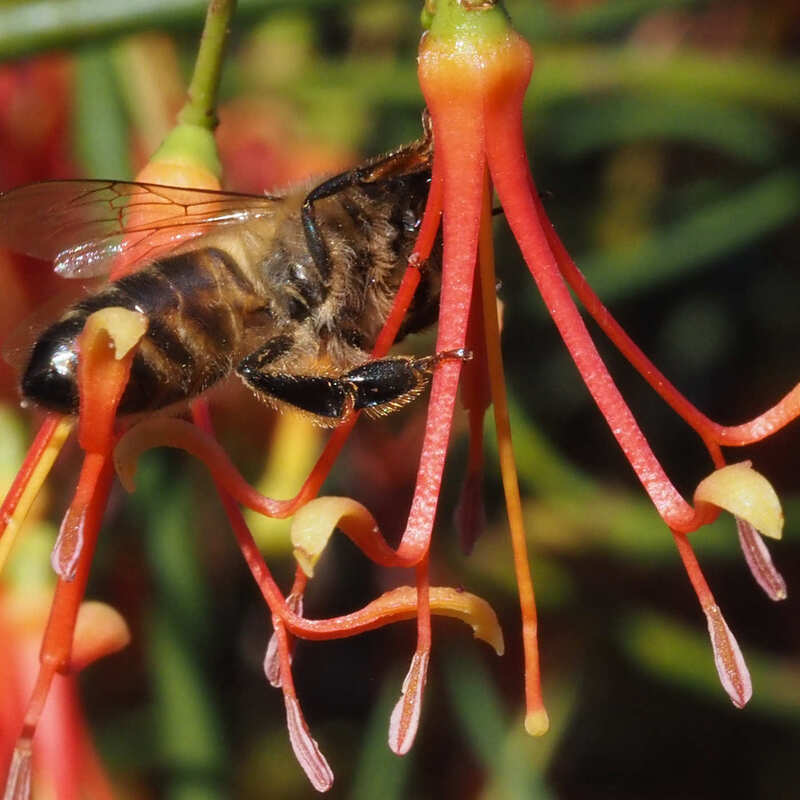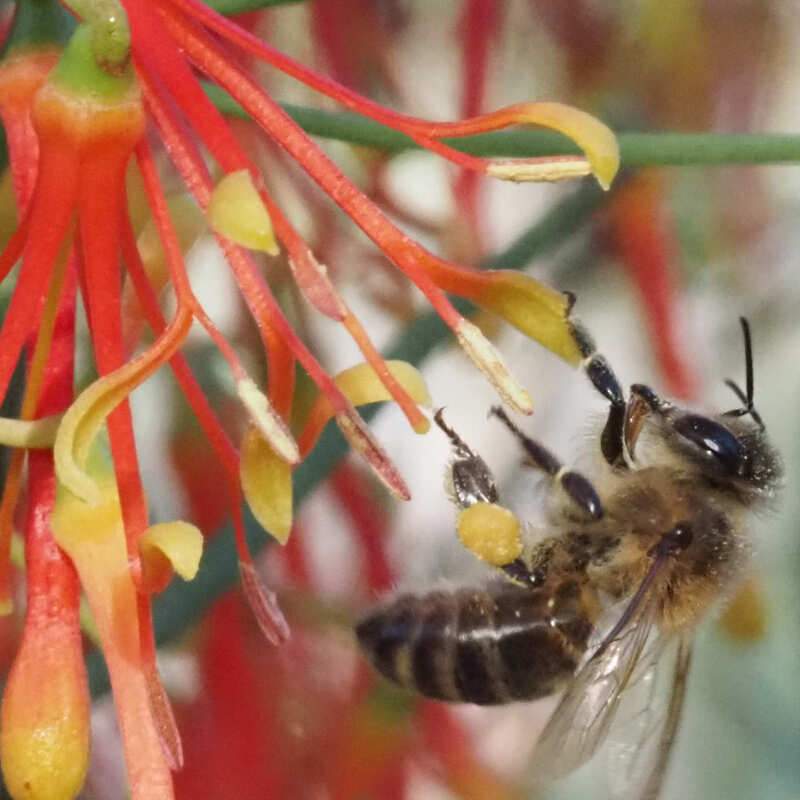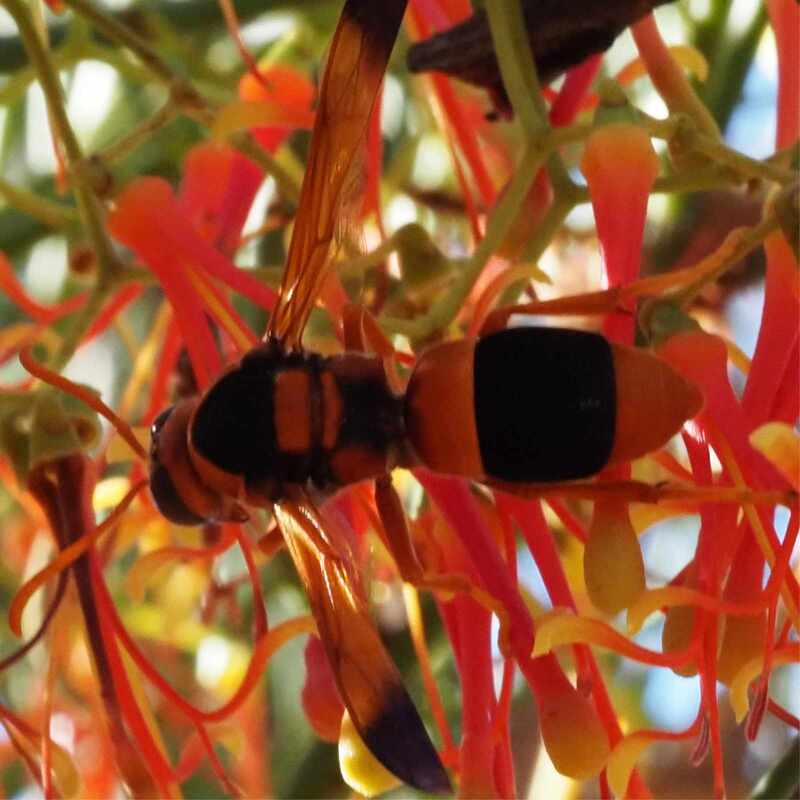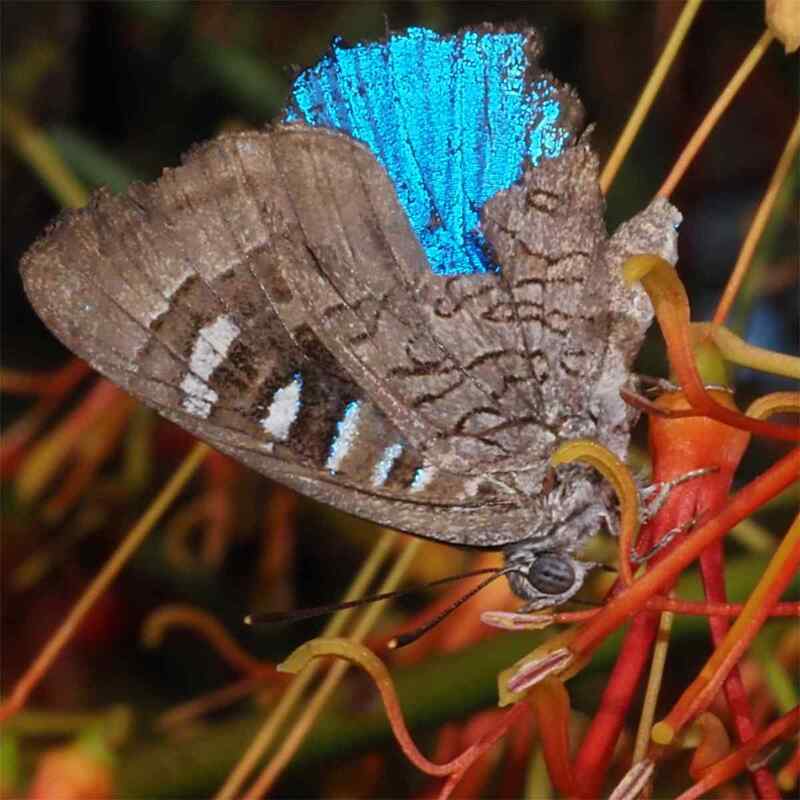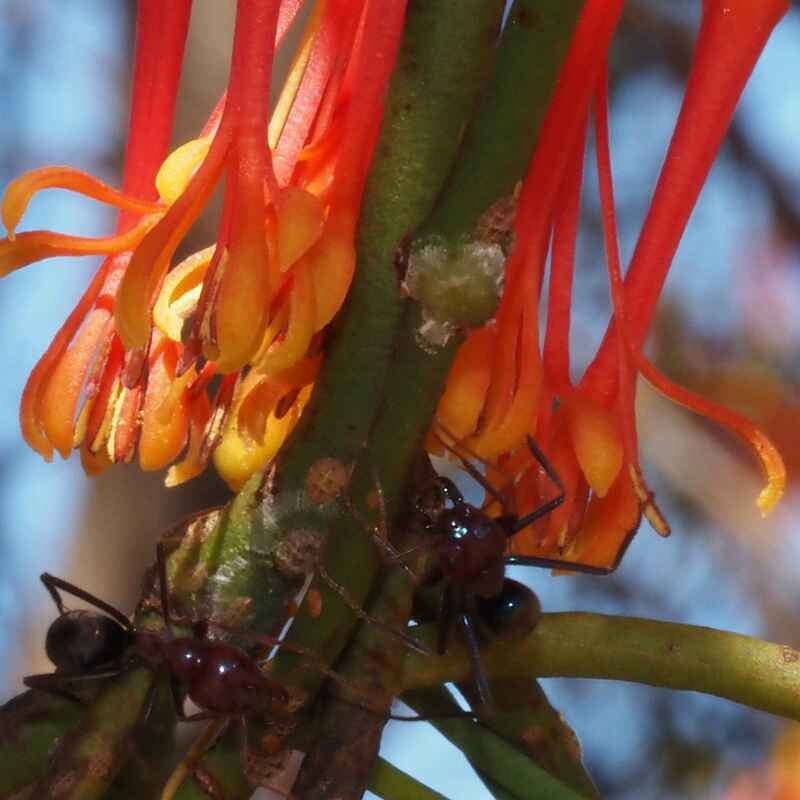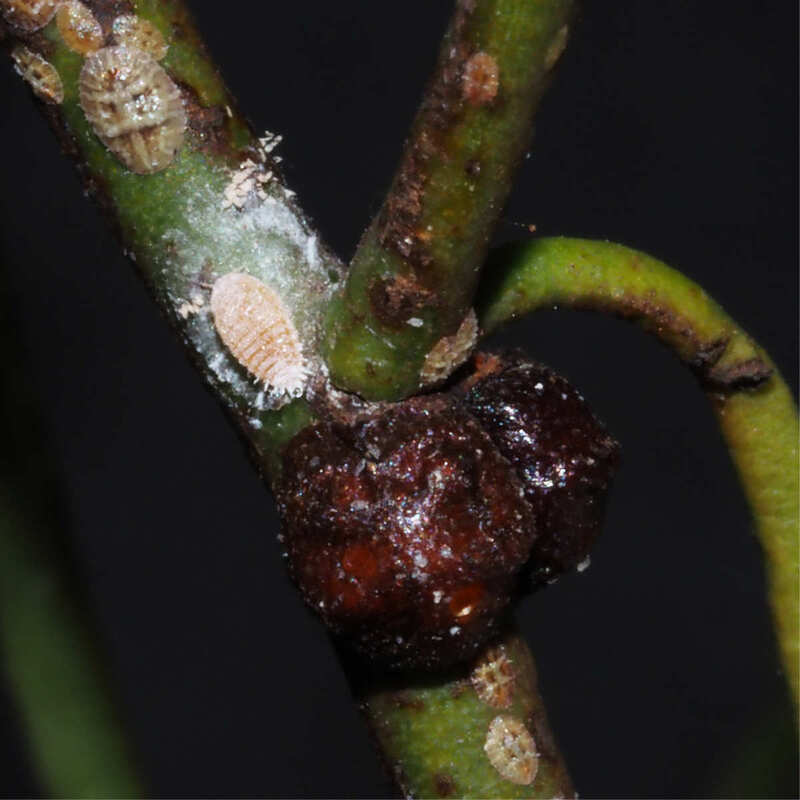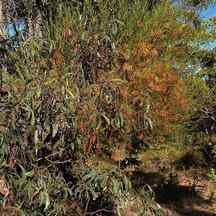 Amyema preissi on Manna Wattle
Amyema preissi on Manna Wattle - Stamens and pistil project out to touch a bird’s head as it drinks nectar, but petals are open right down to the ovary. This allows short-tongued insects like ants, flies, and honeybees to steal nectar without pollinating the flower.
- Flowers were open or closed with very few in between.
- In early morning nectar leaked out of closed flowers and collected on the bulbous end, but there was no sign of nectar on anthers or pistil of open flowers.
When the flower is ready to open, nectar flows down the inside, escapes from joins between tepals on the side, and coats the end. There were lots of bees on open flowers but they avoided the nectar on unopened flowers. Didn't like sticky claws?
When I dissected closed flowers I could see that stamens and anthers form a straight line from the centre of the tepal, but the end of the tepal that encloses them is curved. This creates a spring mechanism, which is held in place by stronger join at the end of the tepal.
Perhaps, when honeyeaters lick nectar off the flower end, the motion causes the flower to spring open so the bird can pollinate it.
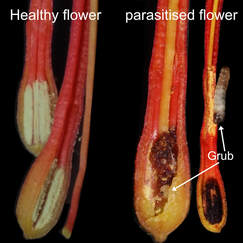
About 10% of the flowers remained closed apart from a tiny dark dot on the outside, which marked the point where a moth or other insect laid an egg. Inside was a 3mm translucent grub, which ate the flower's reproductive parts then formed a dark brown pupa.
Sadly an unbalanced ecosystem.
